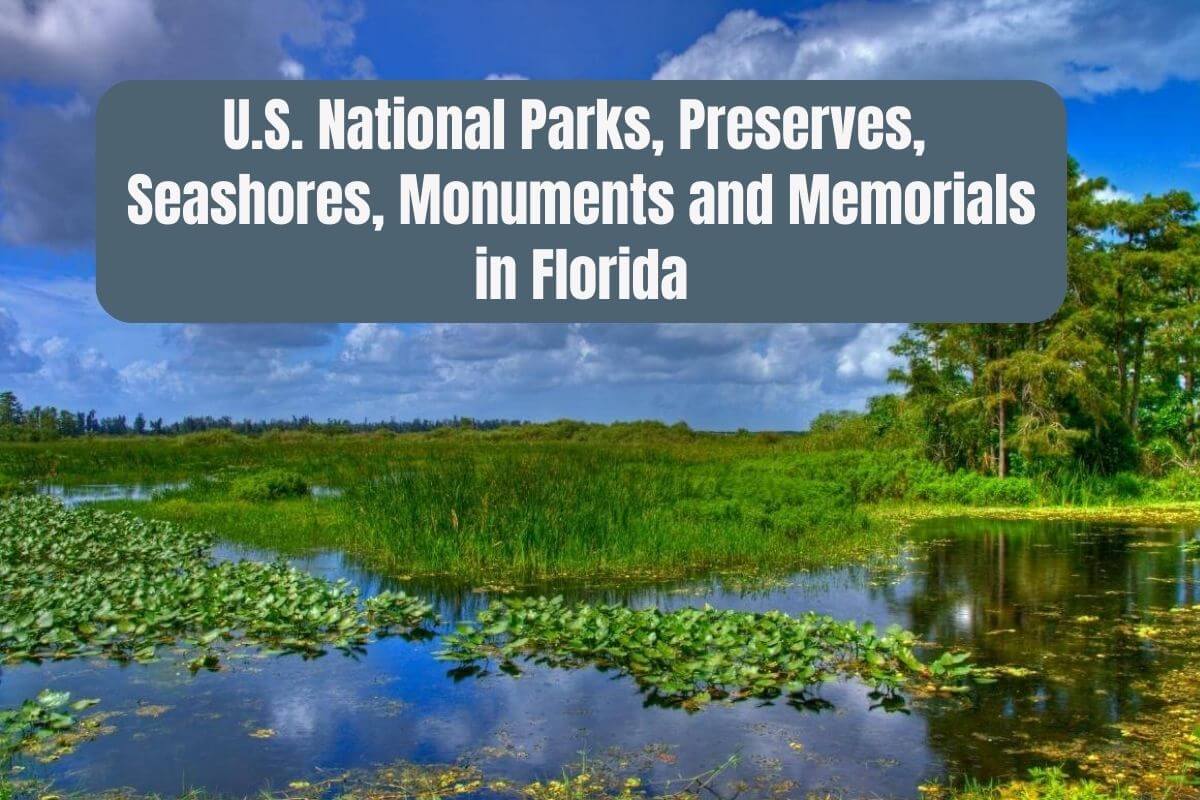Last Updated on January 2, 2024
When people think of U.S. National Parks in Florida, what most likely will come to mind are Everglades National Park, Biscayne National Park, and perhaps the Dry Tortugas.
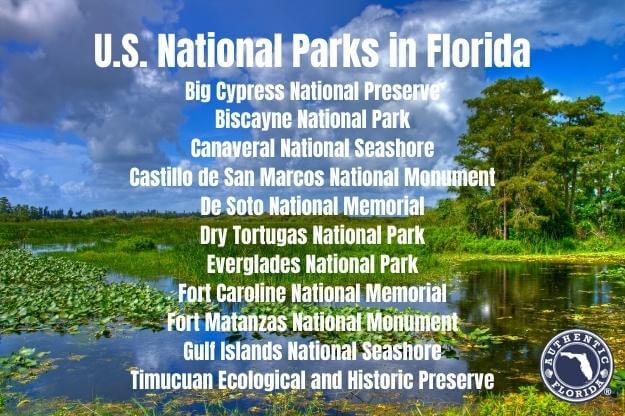
But did you know there are actually 11 U.S. National Parks, Preserves, Seashores, Memorials, and Monuments in Florida?
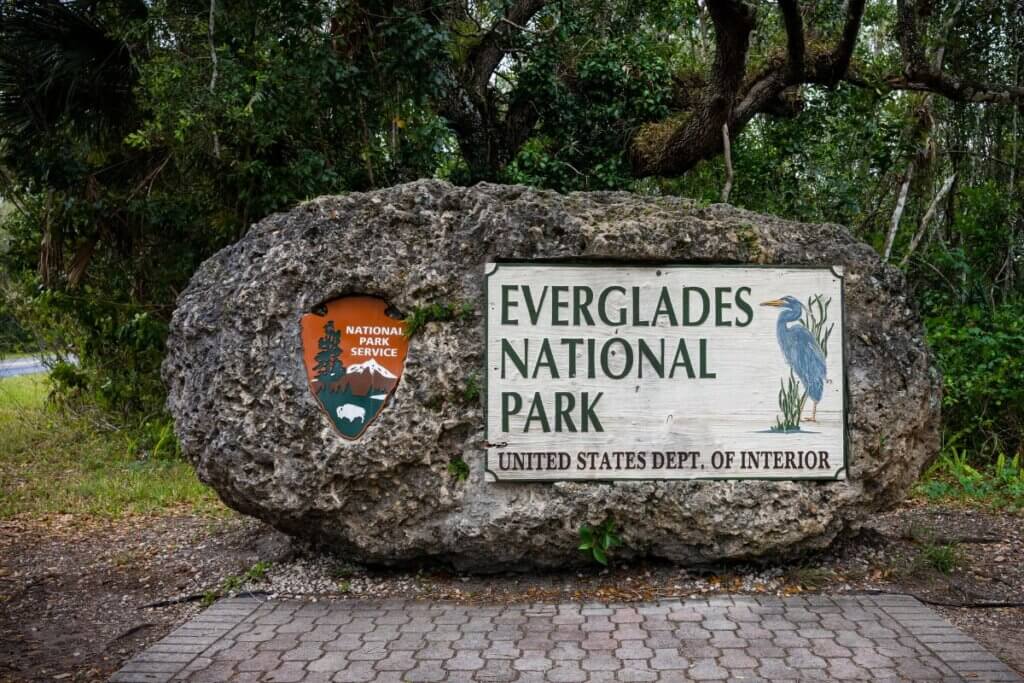
Everglades National Park is the third largest national park in the contiguous United States and is one of the most unique ecosystems in the world.
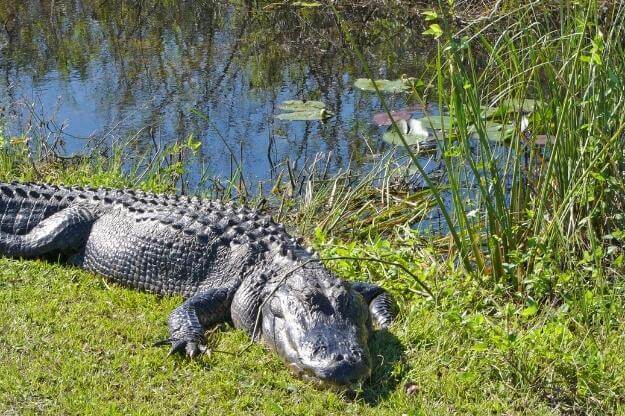
This U.S. National Park in Florida is home to alligators, crocodiles, manatees, panthers, and dozens of other species of animals.
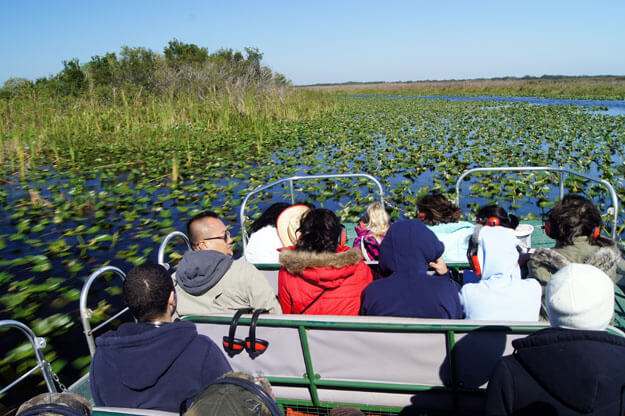
Visitors can take airboat tours, hike through wetlands, or camp under the stars.
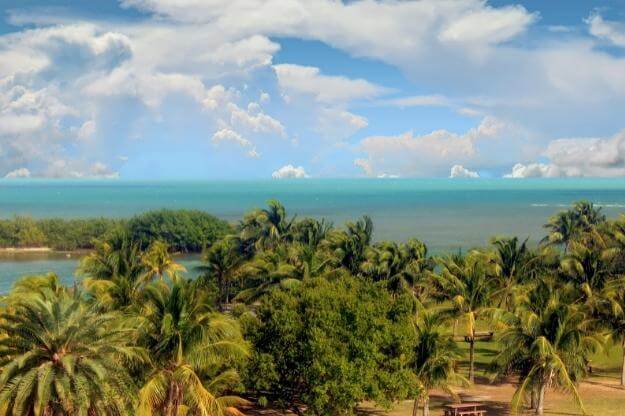
Biscayne National Park is a marine paradise. The park is home to coral reefs, shipwrecks, mangroves, and countless species of fish.
Visitors can snorkel, scuba dive, fish, or kayak through the clear blue waters.
U.S. National Parks, Preserves, Seashores, Monuments and Memorials in Florida

Dry Tortugas is a U.S. National Park located about 68 miles west of Key West in the Gulf of Mexico.
The park is home to a variety of plant and animal life, as well as several historical and archaeological sites.

The name “Dry Tortuga” refers to the island not being subject to tides or other water movements.
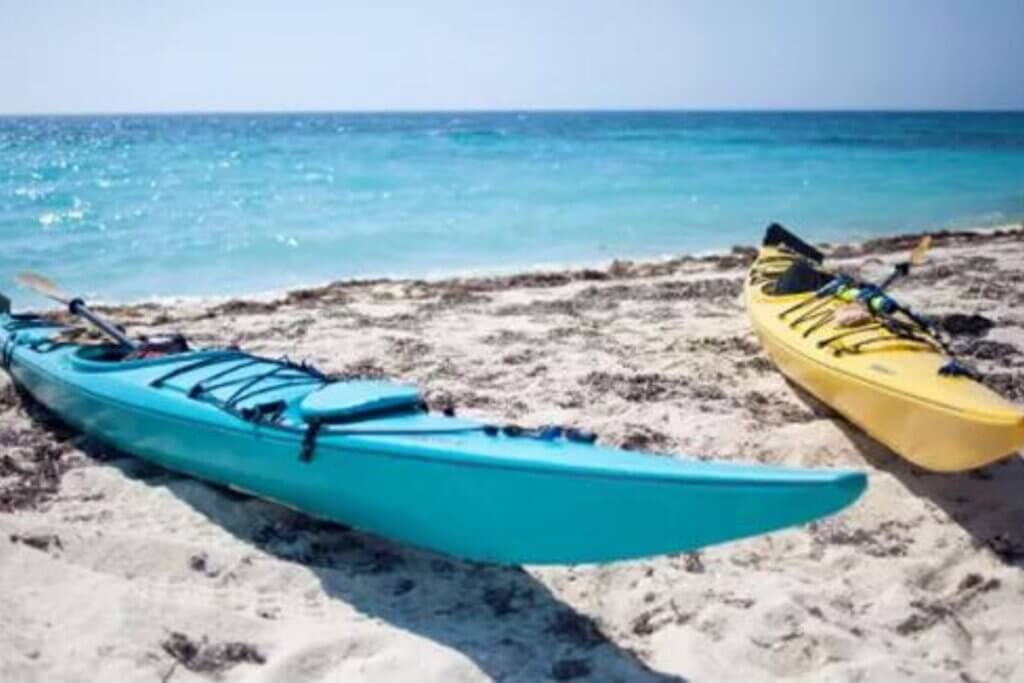
Whether you’re looking for an adventurous outdoor experience or a relaxing day by the water, Florida’s national parks have something for everyone.
Big Cypress National Preserve – Ochopee

The freshwaters of the Big Cypress Swamp, essential to the health of the neighboring Everglades, support the rich marine estuaries along Florida’s southwest coast.
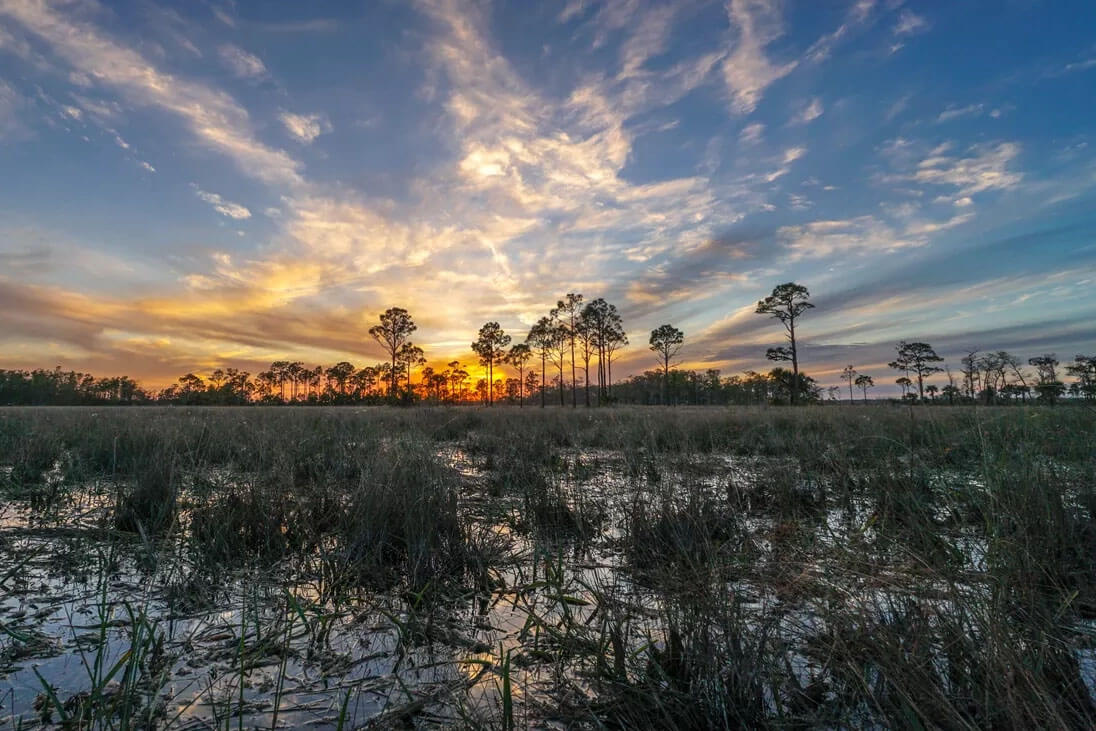
Conserving over 729,000 acres of this vast swamp, Big Cypress National Preserve contains a mixture of tropical and temperate plant communities.

This is also home to diverse wildlife, including the Endangered Florida panther.
Biscayne National Park – Miami, Key Biscayne & Homestead
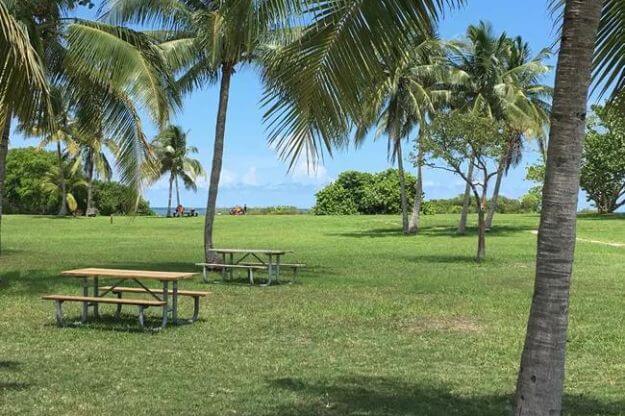
Within sight of Miami, yet worlds away, Biscayne National Park protects a rare combination of aquamarine waters, emerald islands, and fish-bejeweled coral reefs.
Evidence of 10,000 years of human history is here too, from prehistoric tribes to shipwrecks and pineapple farmers to presidents.
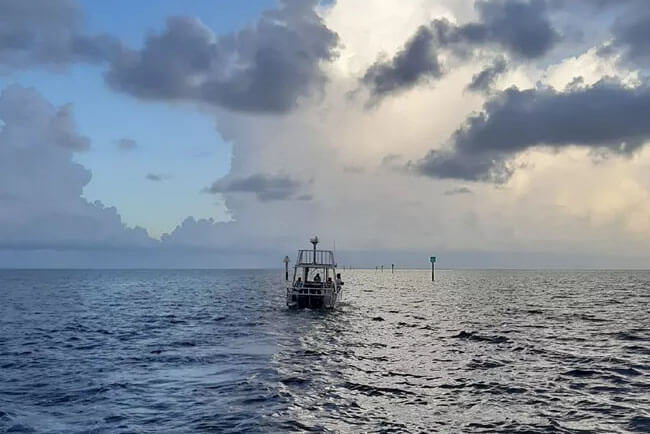
For many, the park is a boating, fishing, and diving destination, while others enjoy a warm breeze and peaceful scenery.
Canaveral National Seashore – Titusville and New Smyrna Beach
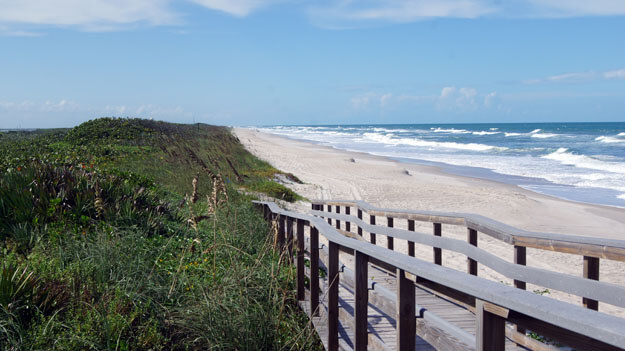
At Canaveral National Seashore, you may reflect on a pristine undeveloped shoreline, explore a historic site, or experience the rumble of a rocket soaring into space.

This pristine barrier island composed of dune, hammock, and lagoon habitats provides protection from storms.
It also preserves ancient Timucua Native American mounds, and is a sanctuary for thousands of species of plants and animals.
Castillo de San Marcos – St. Augustine
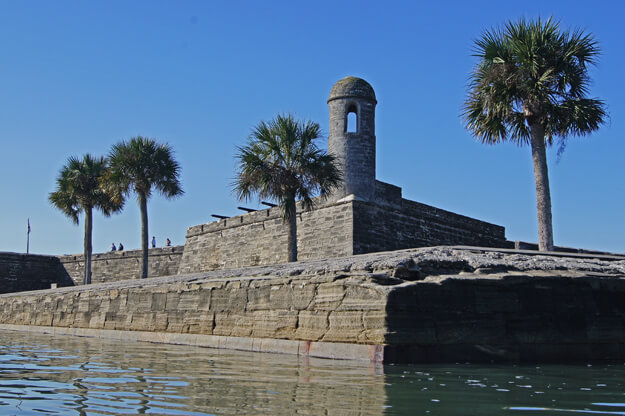
NATIONAL MONUMENT
The monument was built by the Spanish in St. Augustine to defend Florida and the Atlantic trade route.
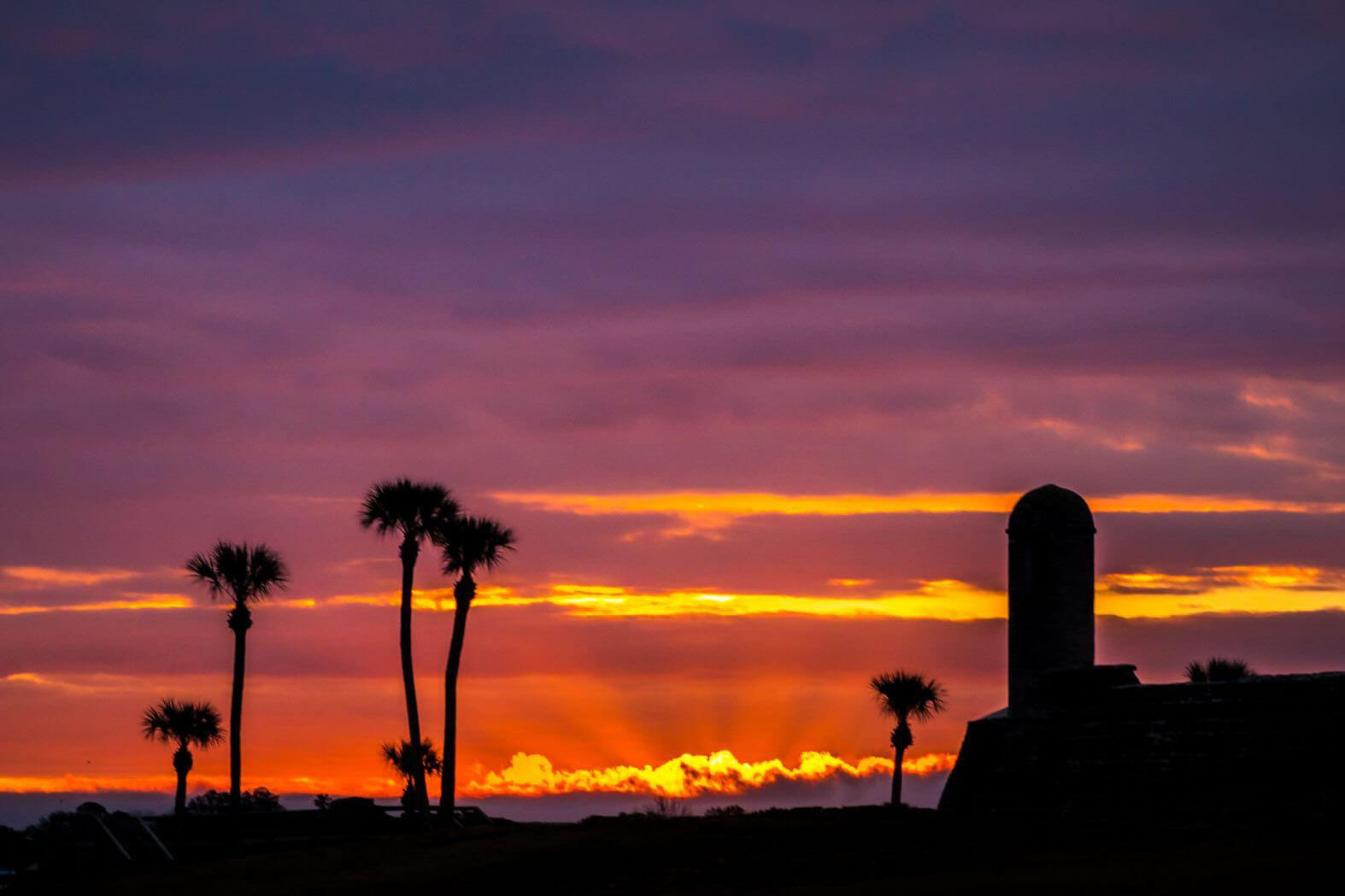
Castillo de San Marcos National Monument preserves the oldest masonry fortification in the continental United States and interprets more than 450 years of cultural intersections.
Fort De Soto Park – St. Petersburg

In May 1539, Conquistador Hernando de Soto’s army of soldiers, mercenaries, craftsmen, and clergy made landfall in Tampa Bay.
They were met with fierce resistance from indigenous people protecting their homelands.

De Soto’s quest for glory and gold would be a four-year, four-thousand-mile odyssey of intrigue, warfare, disease, and discovery that would form the history of the United States.
Dry Tortugas National Park – West of Key West
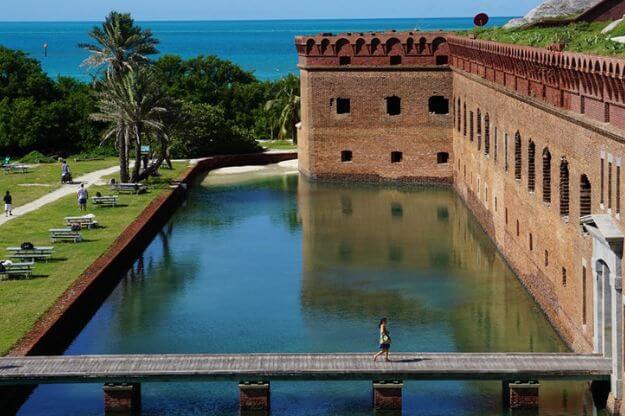
Almost 70 miles (113 km) west of Key West lies the remote Dry Tortugas National Park. This 100-square-mile park is mostly open water with seven small islands.
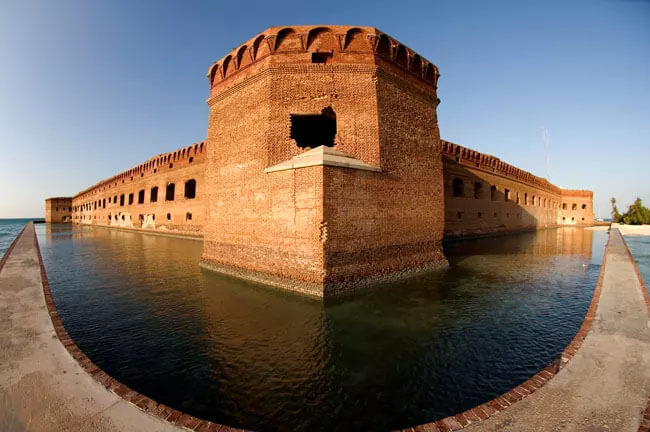
Accessible only by boat or seaplane, the park is known the world over as the home of magnificent Fort Jefferson, picturesque blue waters, superlative coral reefs and marine life, and the vast assortment of bird life that frequents the area.
Everglades National Park – Miami, Naples, and Homestead

Everglades National Park protects an unparalleled landscape that provides important habitat for numerous rare and endangered species.
This is the home to manatee, American crocodile, and the elusive Florida panther to name a few.
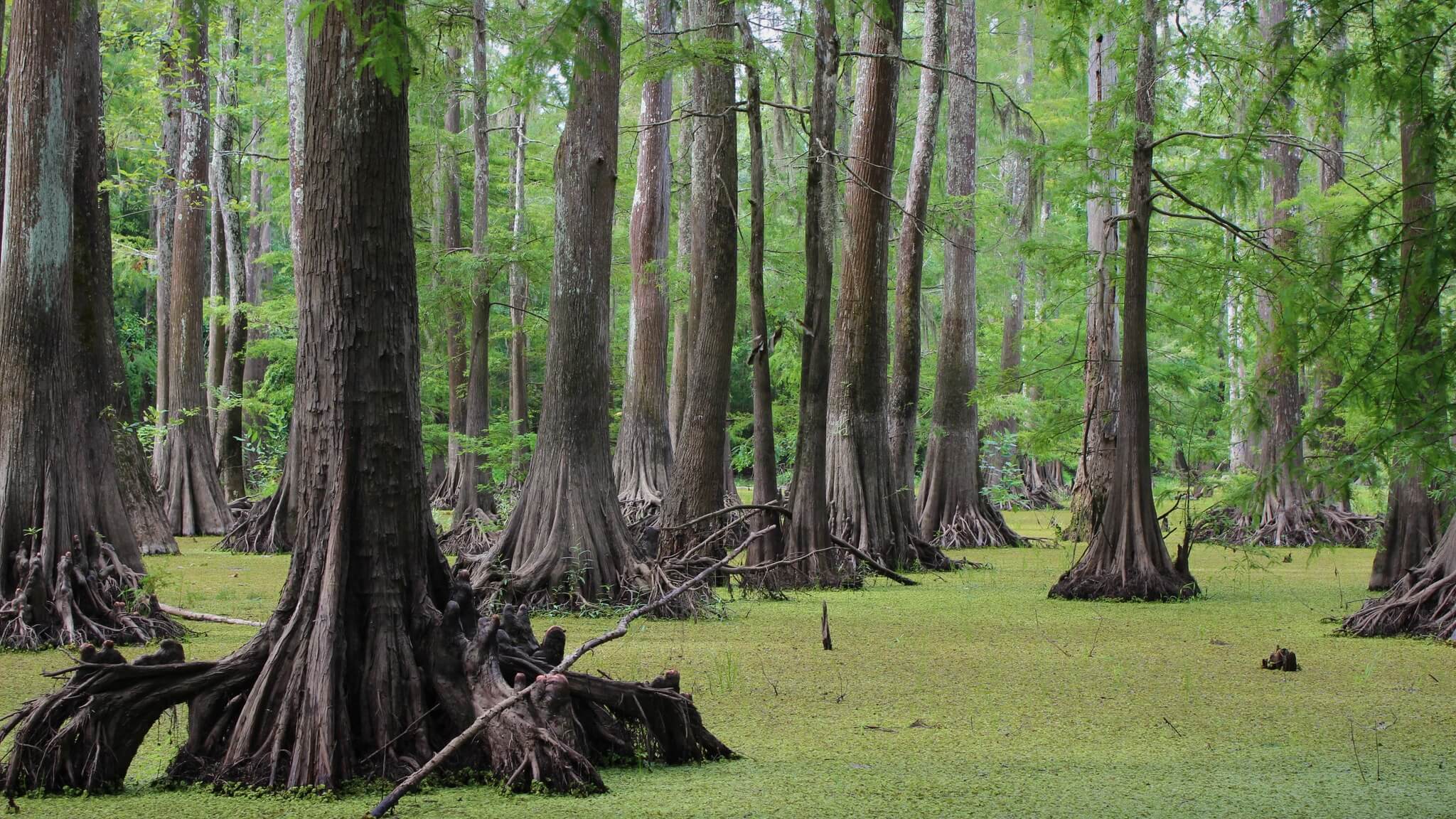
An international treasure as well, the park also includes a World Heritage Site, an International Biosphere Reserve, a Wetland of International Importance, and a specially protected area under the Cartagena Treaty.
Fort Caroline the Timucuan Preserve – Jacksonville
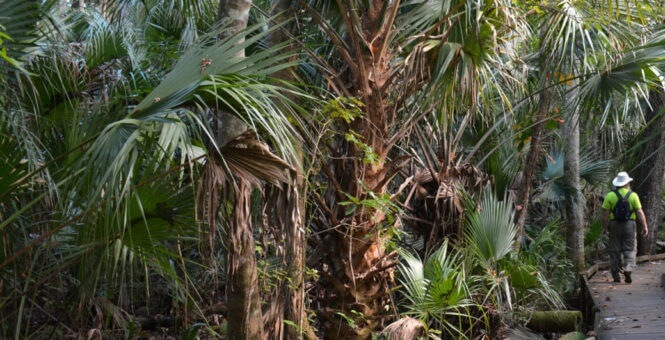
At the settlement of la Caroline, French settlers struggled for survival in a new world. Many sought religious freedom in a new land, while others were soldiers or tradesmen starting a new life.
The climactic battles fought here between the French and Spanish marked the first time that European nations fought for control of lands in what is now the United States.
It would not be the last time.
Fort Matanzas National Monument – St. Augustine
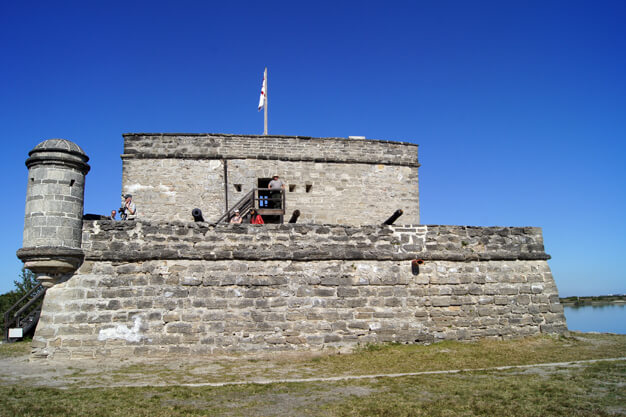
Fort Matanzas National Monument preserves the fortified coquina watchtower. It was completed in 1742 and defended the southern approach to the Spanish military settlement of St. Augustine.

It also protects approximately 300 acres of Florida coastal environment containing dunes, marsh, maritime forest, and associated flora and fauna.
It also is a safe haven for threatened and endangered species.
Gulf Islands National Seashore – Gulf Breeze
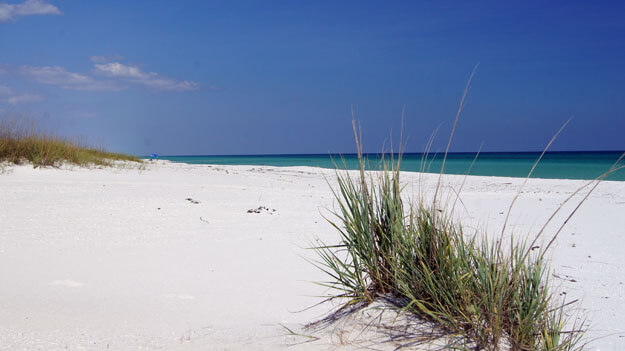
Millions of visitors are drawn to the Gulf of Mexico for Gulf Islands National Seashore’s emerald coast waters. From its fertile marshes and historical landscapes, it offers something for everyone.
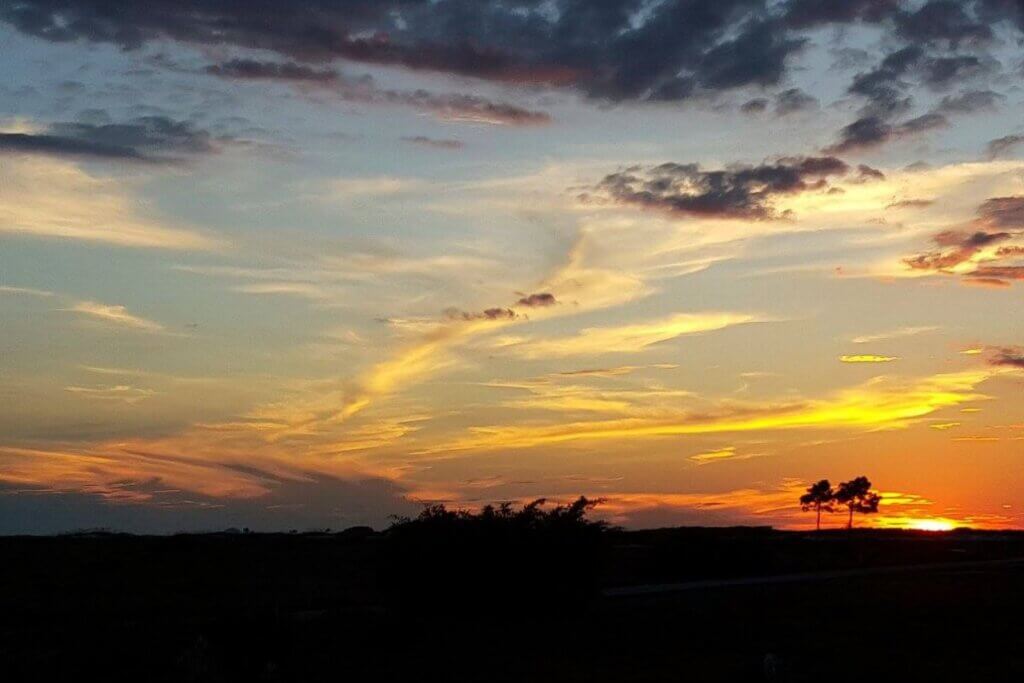
Gulf Islands National Seashore is a scenic coastal destination providing some of the most pristine beaches in the state as well as diverse wildlife, outdoor recreational opportunities and stunning sunsets.
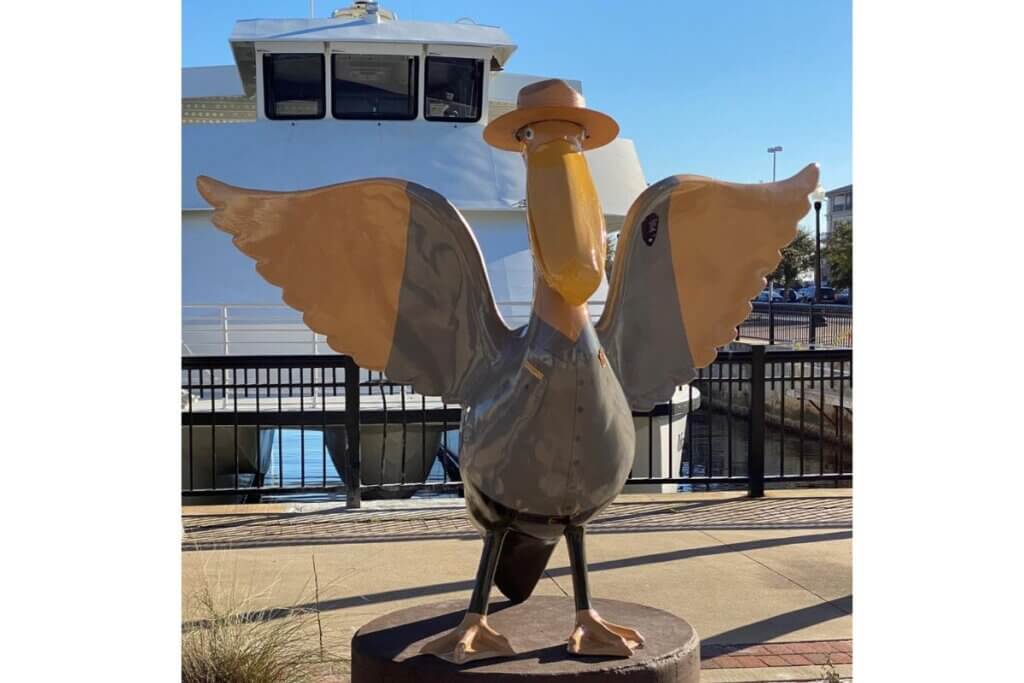
Don’t miss the ferry ride to get a great view of the surroundings. Try to time your trip around the Blue Angels flight schedule.
Timucuan Ecological & Historical Preserve – Jacksonville
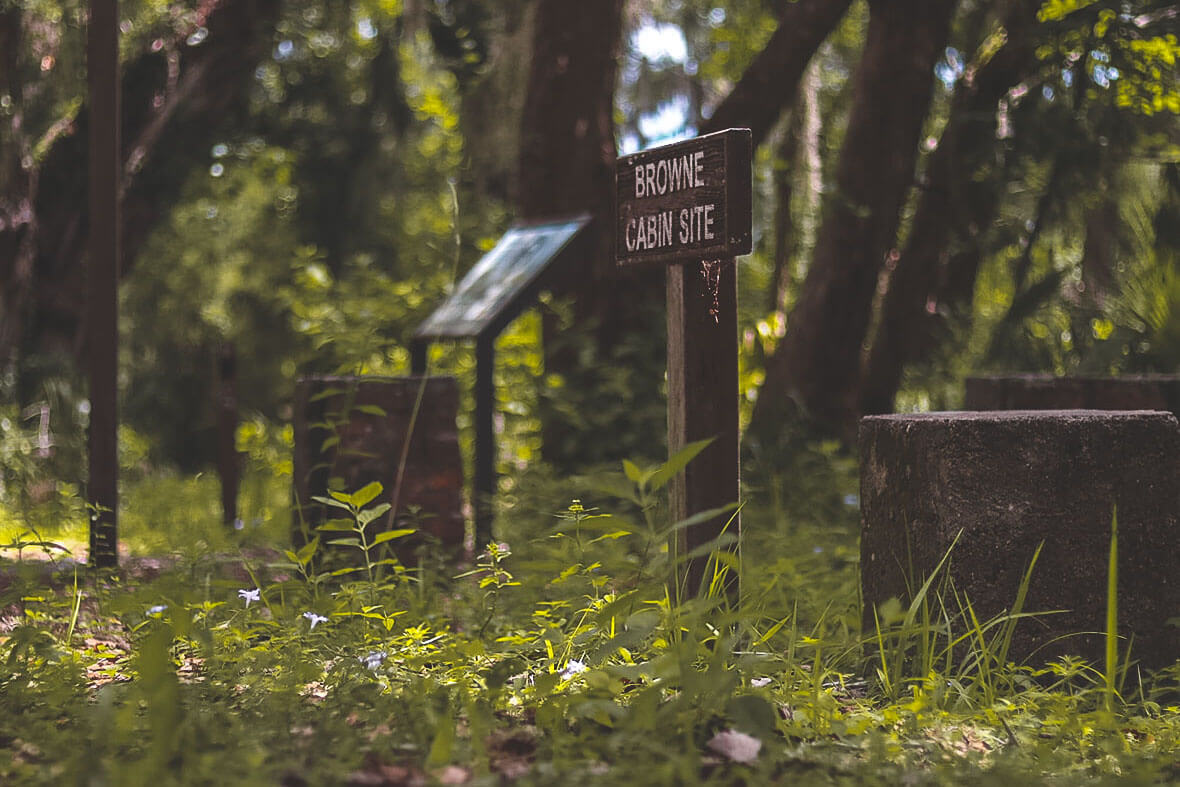
Timucuan Ecological & Historical Preserve is one of the last unspoiled coastal wetlands on the Northeastern Atlantic Coast.
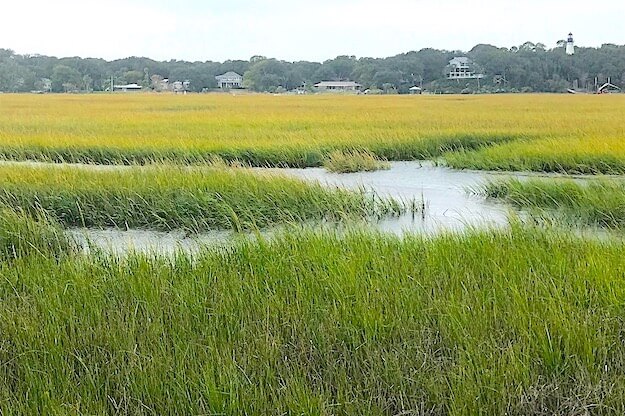
Discover 6,000 years of human history and experience the beauty of salt marshes, coastal dunes, and hardwood hammocks.
The Timucuan Preserve includes Fort Caroline and Kingsley Plantation. There are great walking and hiking trails throughout the preserve.
Free Entrance Days in the U.S. National Parks
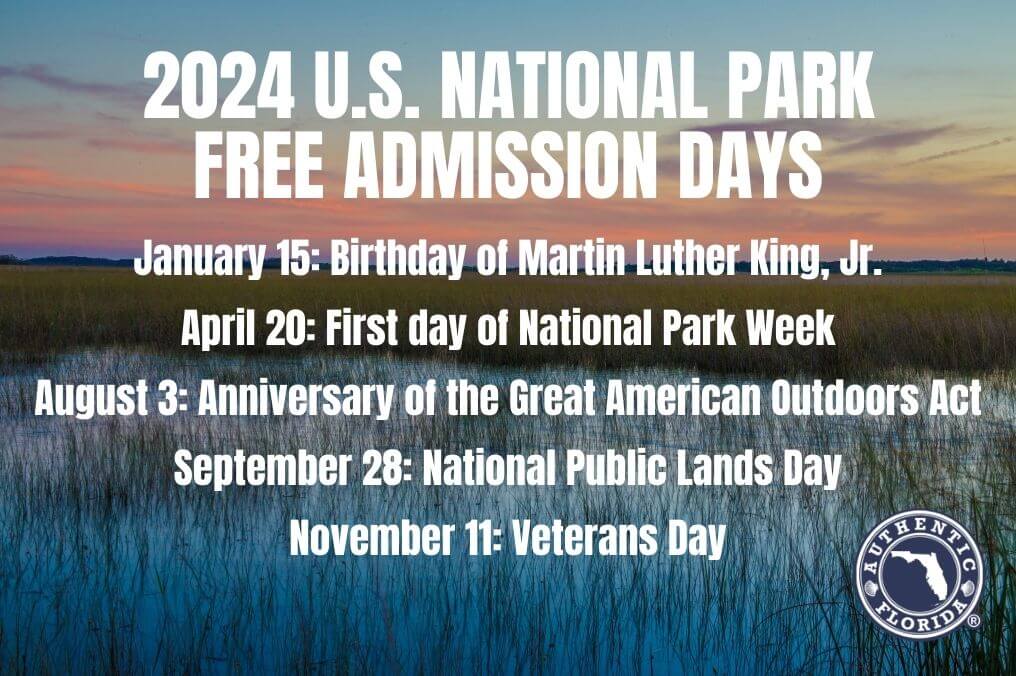
On five days in 2024, all National Park Service sites that charge an entrance fee will offer free admission to everyone.
Mark your calendar for these entrance fee-free dates:
- January 15: Birthday of Martin Luther King, Jr.
- April 20: First day of National Park Week.
- August 3: Anniversary of the Great American Outdoors Act.
- September 28: National Public Lands Day.
- November 11: Veterans Day.
Information provided by the National Park Service.
Looking for more Florida parks?
- Blue Spring State Park + Nearby Places to Eat, Stay, & Shop
- Falling Waters State Park + Nearby Places to Eat, Stay, & Shop
- Green Springs Park + Nearby Places to Eat, Stay, & Shop
- Grayton Beach State Park + Nearby Places to Eat, Stay & Shop
- Madison Blue Spring State Park + Nearby Places to Eat, Stay, & Shop
- Silver Glen Springs + Nearby Places to Eat, Stay, & Shop
- Salt Springs + Nearby Places to Eat, Stay, & Shop
- Fort Zachary Taylor Historic State Park + Nearby Places to Eat, Stay, & Shop
- A Visit to Remarkable Rainbow Springs State Park
- Spotlight on Stump Pass Beach State Park
- A Day at Silver Springs State Park in 2024

